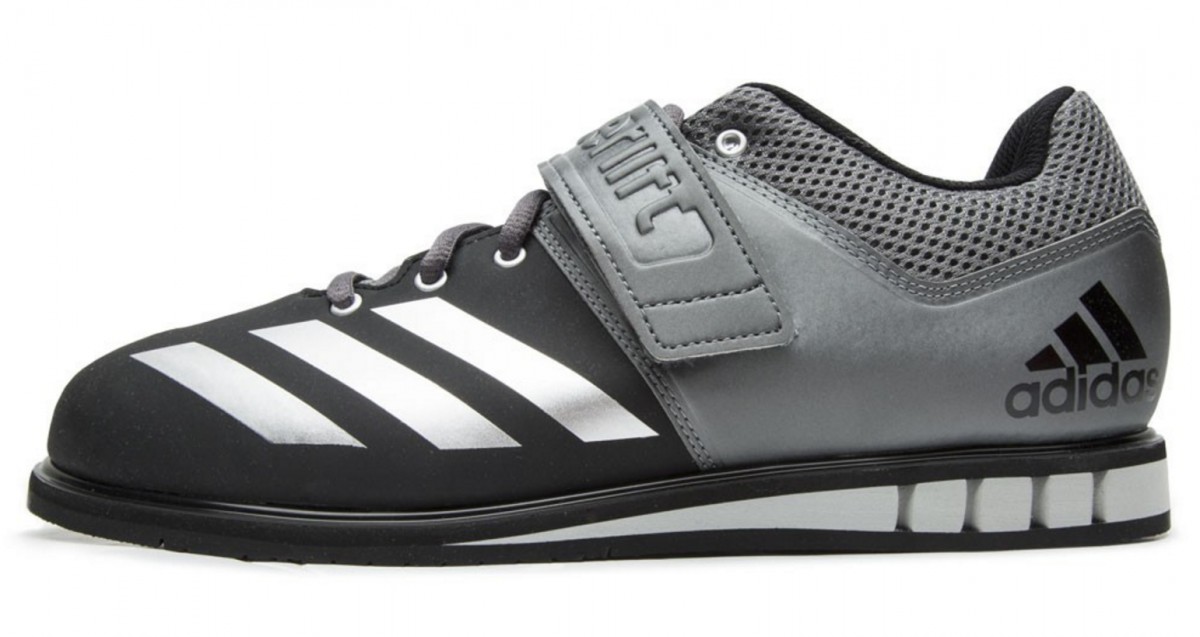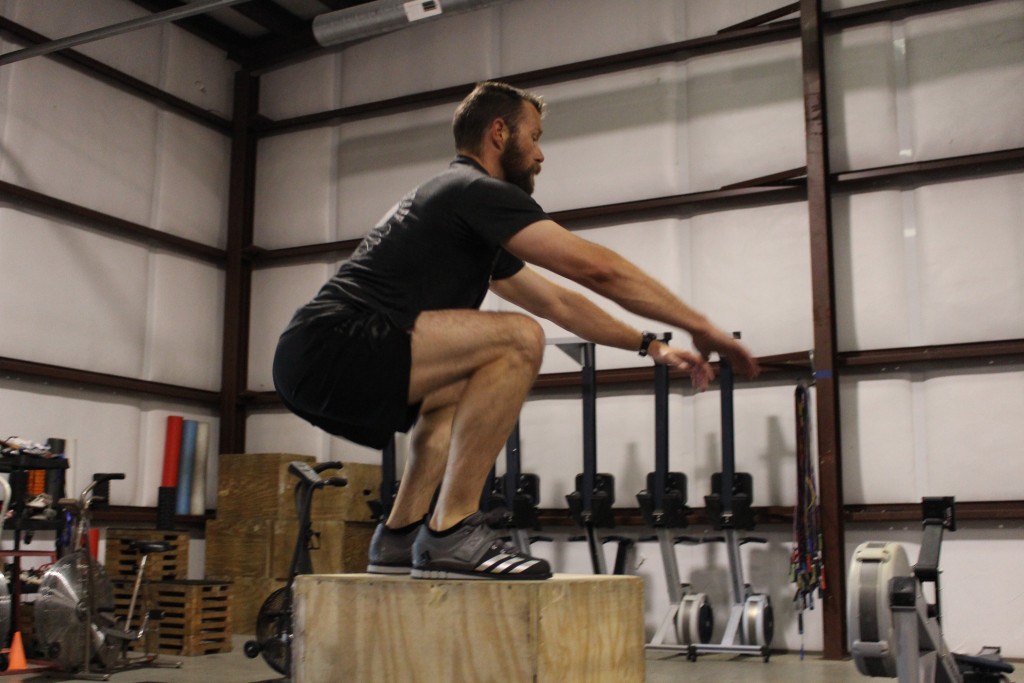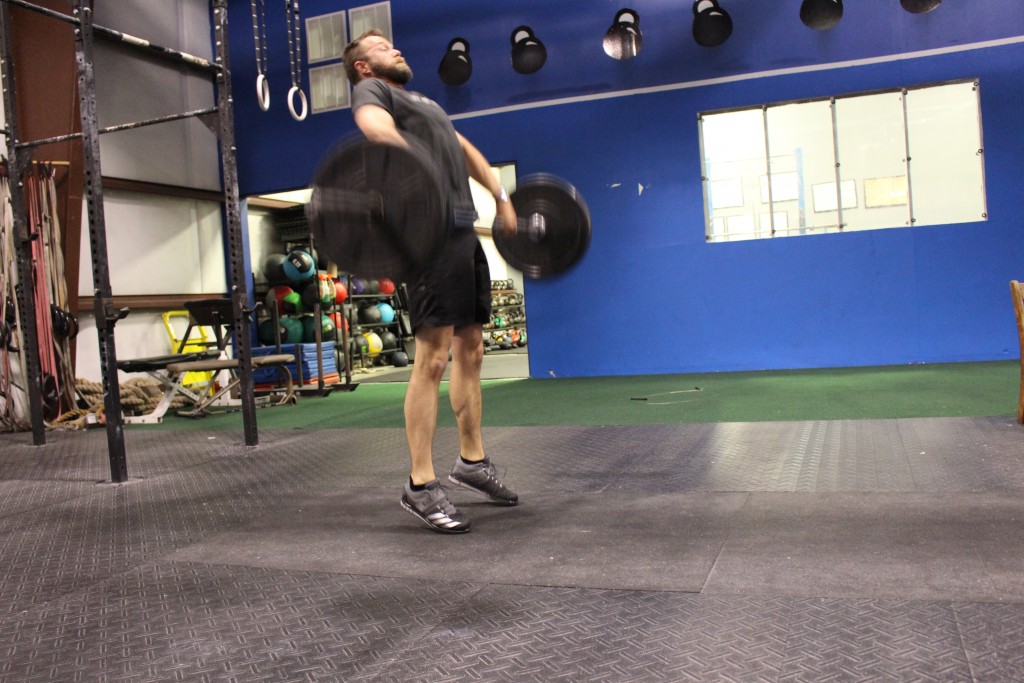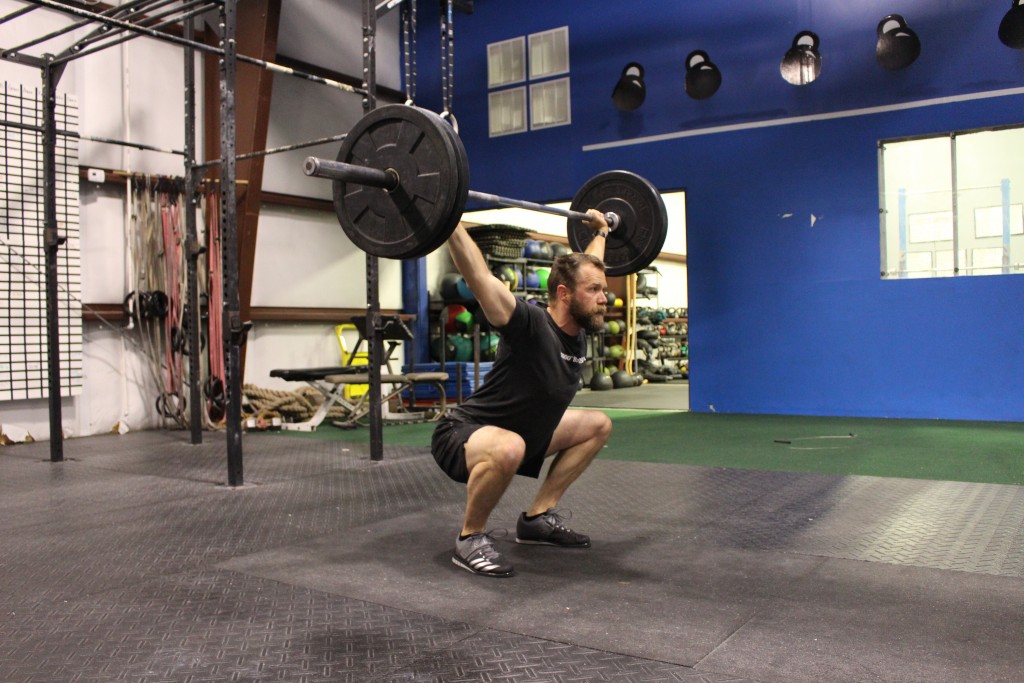Adidas Powerlift 3 Review
Our Verdict
Our Analysis and Test Results
The Powerlift 3 is a sturdy and stable weightlifting shoe. It differs from the typical weightlifting shoe by having a slightly lower, and more shock-absorbent, heel. This makes it a bit more broadly useful in CrossFit training and competition.
Performance Comparison
This model is not as well-balanced across our testing metrics as the Nike Metcon 3, and was scored just ahead of the NOBULL Trainer, earning the second place spot in our review.
To keep things in perspective, the important consideration for you is to decide how much performance you want from your shoe when running versus weightlifting. The Powerlift 3 was rated lower on running than most of the shoes we tested, just behind the Reebok Nano 7. Its performance on jumping and landing more closely mimicked weightlifting, so it performed well on bodyweight movements like burpees, lunges, and box jumps. This pair is more versatile than the typical weightlifting shoe, and our testers found it useful during many CrossFit workouts.
Weightlifting
Since it was designed for lifting heavy weight, this model was naturally a high performer on the weightlifting metric. We had testers squatting over 400 pounds in it and cleaning up to 300 pounds. It provides enough stability to handle repeated heavy lifts.
Most of the testers initially preferred the Fastlift 370 BOA for moderately weighted squats and explosive lifts, because its slightly higher heel was more familiar to those with a weightlifting background. However, once the loads got heavy, they preferred the extra support of a traditional lacing system. The laces work well to provide different amounts of tension at the toes versus the ankles to provide a bit more customized fit. In fact, the slightly lower heel was preferred by one tester, who found it more like the low-heeled Do-Win weightlifting shoes he'd been wearing.
The inclusion of loaded carries brought the Powerlift 3 back into the lead over the Inov-8, since its lower heel height made it easier to walk with heavy weight. The Powerlift 3 has just a little more shock absorption than traditional weightlifting shoes; this was even more noticeable on the running tests. For weightlifting, the Nike Metcon 3 was almost as stable as the Powerlift 3; it performed well under heavy squats and explosive Olympic lifts and was slightly smoother on the loaded carries than both the lifters.
Reebok's Nano 7 provided about the same supportive heel for squatting and good stiffness for Oly lifts as the Metcon 3, but was not quite as smooth for the loaded carries, so was not as close a contender to the Powerlift. The CrazyPower Trainer, another Adidas offering, was actually the best shoe tested for loaded carries, but felt less stable than the Powerlift 3 on heavy squats and cleans — primarily due to the more rounded edge on its heel. Given the amount of time and effort CrossFit athletes put into moving heavy weights, the Powerlift 3 could be very beneficial to those looking for a competitive advantage, or those who want to pay more attention to improvements with the barbell.
Running
While it was not a top scorer on the running metric, our testers were pleasantly surprised by the Powerlift 3. Its heel felt lower and more shock-absorbent than other lifters the testers had worn, allowing it to earn acceptable marks for running, overall.
With attention to running form, our lead tester was willing to run a half mile in this model. He felt this would be a good shoe for CrossFit workouts combining a heavy barbell lift with repeated short runs, up to 250 meters. While not ideal for long runs, the supportive features provided plenty of power transfer for accelerating into a sprint. On the running metric, this competitor performed only slightly below the Reebok Nano 7, impressive for a lifter. It was also ranked significantly better for running than the other lifting shoe in this review - the Inov-8 Fastlift 370 BOA. The Powerlift 3 ranked ahead of the Fastlift on running due to its lower, more shock-absorbant heel.
Support
This Best Buy award winner provided the most support of the shoes we tested. Designed for handling the forces needed for moving a heavy barbell, the Powerlift 3 provided two key features. First, Adidas built a solid connection between the sole and upper. The high level of stiffness in the upper's heel cup kept our testers' feet from slipping or shifting when applying force at an angle - whether landing underneath a heavy split-jerk or coming down from a box-jump. Second, the lacing system was excellent for getting the Powerlift 3 to conform to the testers' feet. It was easy to keep less tightness in the toes, but more near the ankle. The wide Velcro strap across the instep provided an additional dimension to customize support.
The benefits for weightlifting are clear, but a more supportive shoe also provides a little bit of added performance when landing from a box-jump, coming off a pullup bar, or down from the rings. The increased support is also beneficial accelerating in a sprint. The Powerlift 3 scored higher than the Inov-8 Fastlift 370 BOA due to its lacing system. Our testers found the ability to create different tensions very helpful in the Powerlift 3, but lacking in the Fastlift 370 BOA's self-equalizing system. The Powerlift 3 scored higher on support than the Nike Metcon 3 by having a stiffer upper, with a more solid connection between the upper and sole. The Metcon 3's flexibility proved very useful in other metrics but kept it behind the Powerlift 3 on support.
Protection
The Powerlift 3 scored highest on protection. It has a thick upper, plenty of overlap between upper and tongue, and a nearly-solid toe box. The wide Velcro strap provides an additional layer. It was the tank of the shoes we tested.
For those concerned about protecting their feet from the jump rope on a missed double-under, this could be a great choice, as this model excelled on double-unders. The flexibility in the forefoot worked well for repeated jumping. During rope climbs, the thick upper was very protective of the foot during ascents and descents. The upper itself did not provide any grip on the rope, but the relatively sharp edge of the sole on the medial and lateral side of the instep provided a good hold on the rope for our lead tester. The Powerlift 3 didn't grip the rope nearly as well as the Reebok Nano 7, the Nike Metcon 3, or the NOBULL Trainer, which all have special tread on the medial side of the instep specifically for rope climbs.
Sensitivity
The Powerlift 3 has sensitivity where it is needed in a weightlifting shoe — the forefoot. From the ball of the foot back to the heel, the emphasis on stabilizing heavy weight means a loss of sensitivity. The raised heel made it a little difficult to manage direction changes on fast shuttle runs. Landing at the top of a box jump was sometimes awkward for the first rep or two, with the heel dragging That said, it was sensitive enough for sets of double-unders with the jump rope.
This model ranked just behind the Inov-8 Fastlift 370 BOA on sensitivity, largely due to the Fastlift's more flexible forefoot, as it was a little more sensitive for jumping and landing. The Powerlift 3 also ranked behind the Reebok Nano 7, NOBULL Trainer, and Adidas CrazyPower Trainer - which all have slightly more flexibility in the forefoot, and a thinner, more flexible sole overall.
Breathability
The Powerlift 3's high marks at support and protection came at the cost of breathability. Adidas included some vents in the toe box where the shoe needs to hinge above the ball of the foot, but overall ventilation is lacking.
This model scored behind the Adidas CrazyPower Trainer, which also had less mesh in the upper than most of the shoes we tested. Interestingly, the other lifting shoe in our test, the Inov-8 Fastlift 370 BOA, tied for most breathable with the New Balance Minimus 40. Due to its lack of ventilation, the Powerlift 3 might not be the best shoe for someone to use on long workouts in a hot environment.
Comfort
The Powerlift 3 fit our tester's feet well. Although the other Adidas shoe in this test felt a little large, the Powerlift 3 ran true to our sizing expectations. The lacing system does a good job of allowing athletes to provide different tensions at the toe and ankle. One tester with self-proclaimed “odd-shaped feet” appreciated the lacing system. The wide Velcro strap over the instep gives the wearer a further dimension to customize fit and support, and it is wide enough not to dig into the foot.
This model scored the same as the Reebok Nano 7 in comfort. Both shoes have stiff, stable heels which detracted from maximum comfort while running. The Nano 7 had a more comfortable forefoot for our testers, with more room for the toes than the narrower Powerlift 3. The top edge of the upper on the Powerlift 3 was more comfortable than the Nano 7, however. The Powerlift 3 also scored close to the Asics Conviction X on comfort. The Conviction X has a much more flexible sole, but was narrow enough to lose points with our testers. The lacing system on the Conviction X was also more harsh to the top of the foot than the Powerlift 3, which has a padded tongue.
Best Applications
This Best Buy winner is a great choice for athletes who participate in local CrossFit competitions. Wearing a shoe with weightlifting performance features can provide a small edge, especially when an event features heavy barbell work. Anyone with flexibility limitations when squatting, including masters athletes, should consider it for its elevated heel. If you've never used a pair of weightlifting shoes when squatting, you'll be surprised by the difference. The subtle changes in body position that result from a supportive, elevated heel can make a big difference for someone who struggles to maintain balance or position at the bottom of a squat. Given its relatively low cost, this pair would make a great first lifting shoe.
Value
At $90, the Powerlift 3 was the lowest-priced shoe we tested. Given its high-performance characteristics, it would provide excellent value to anyone seeking a shoe to aid in their quest to move heavier weights, whether in competition or training. Many other weightlifting shoes have price tags over $200. For the athlete on a budget, this award winner may fill the role of primary CrossFit training shoe in the gym. If you already own a pair of shoes that will work for runs of a mile or more, consider this one for the bulk of workouts that use a barbell or kettlebell, and contain minimal running.
Conclusion
The Adidas Powerlift 3 snags a Best Buy Award due to its combination of high-performance weightlifting features, acceptable running characteristics, and budget-friendly pricing.








